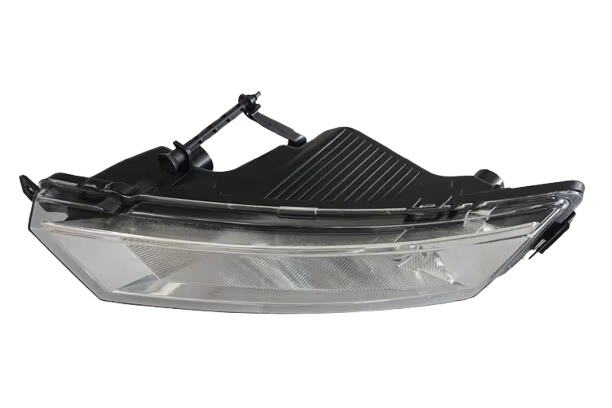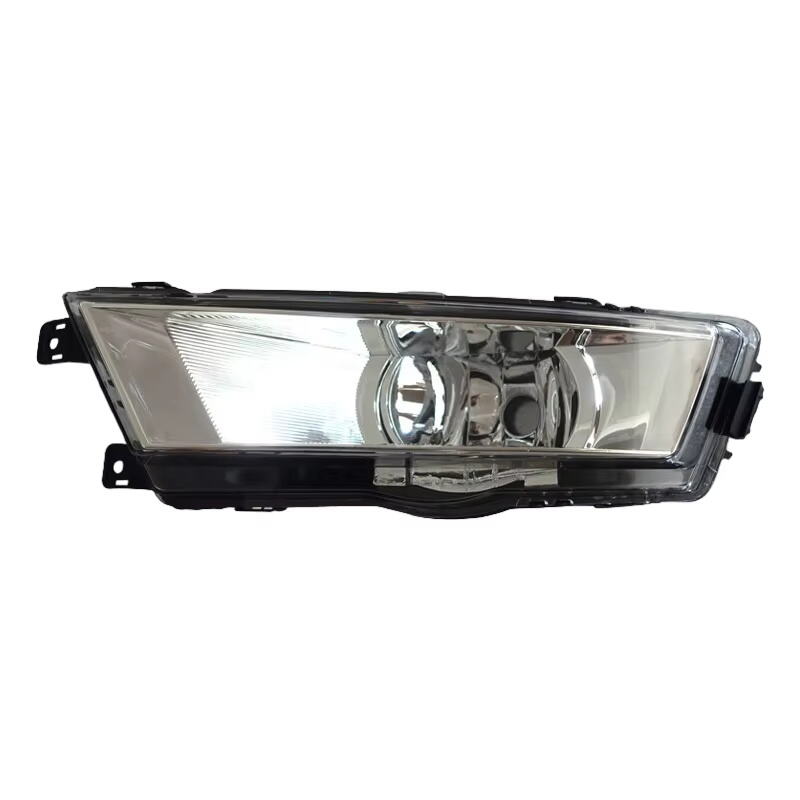Brightening the Road Edge When Conditions Turn Harsh
Fog Lights play a specific, practical role that ordinary headlights cannot fully accomplish in fog, heavy rain, snow, and dust. When visibility drops, the low, wide beam of Fog Lights cuts under or through the obscuring layer to illuminate the road surface, lane markers, and roadside hazards without bouncing back excessive glare. Drivers who understand how Fog Lights function can make safer choices in marginal weather and reduce the likelihood of collisions caused by poor sight lines. This article explores the technology, placement, benefits, and best practices for Fog Lights in depth so fleet managers, safety officers, and everyday drivers can optimize visibility during the worst conditions.
The Basic Physics Behind Fog Lights
How Fog Lights Differ from Headlights
Fog Lights are designed to operate at a lower mounting point and to throw a short, wide beam. This geometry keeps the beam close to the ground where fog density is often lower and avoids reflecting light back into the driver’s eyes. Standard high and low beam headlights emit more forward-directed light that often scatters in water droplets or snow, increasing glare; Fog Lights minimize that scatter effect and improve contrast on the road surface.
Light Color, Intensity, and Beam Pattern
Fog Lights often use warm color temperatures—slightly yellowish light—which scatters less than blue-white light in fog and rain. The beam intensity is lower than main headlights but concentrated across the horizontal plane to reveal lane edges and roadside obstacles. The controlled spread of Fog Lights reduces the blinding effect of backscatter while increasing the amount of useful visual information available to the driver.
When to Use Fog Lights
Recognizing Conditions That Call for Fog Lights
When visibility is reduced to a few hundred meters or less, or when rain or snow turns visibility patchy and rear lighting is obscured, Fog Lights should be used to supplement standard lights. They are particularly helpful on rural roads with limited street lighting where lane markings and the road edge are the driver’s only cues. Fog Lights help maintain situational awareness when headlight beams alone do not provide adequate ground-level detail.
Avoiding Misuse of Fog Lights
Fog Lights are not a substitute for headlights under normal conditions. Using Fog Lights in clear weather can dazzle other drivers and create unnecessary glare. They should be turned off when visibility improves or when following other vehicles closely so as not to interfere with rear drivers’ vision. Proper use is essential to respect other road users while getting the maximum safety benefit.
Placement and Installation Considerations
Optimal Mounting Positions for Fog Lights
Fog Lights are most effective when mounted low on the vehicle’s front fascia—below the level of the standard headlamps. Low placement aligns the light to illuminate road texture and lane edges without projecting into the fog layer. Many modern vehicles integrate Fog Lights into dedicated housings near the bumper or within the lower grille to achieve the correct angle and beam spread.
Aftermarket Fog Light Installation Best Practices
When installing Fog Lights aftermarket, ensure they are positioned according to vehicle-specific guidelines to avoid glare. Wiring should be done with a dedicated switch and, ideally, an interlock so Fog Lights only activate when the ignition is on and the primary lighting system is configured appropriately. Proper aim and beam-cutoff are essential to make Fog Lights effective and compliant with regulations.
Types of Fog Lights and Technologies
Halogen Fog Lights
Halogen Fog Lights are common due to their affordability and warm light characteristics that reduce scattering. They produce a broad flood pattern that is helpful for illuminating the road edge. Many drivers favor halogen Fog Lights for their predictable color and beam shape.
LED and HID Fog Lights
LED Fog Lights offer greater longevity and lower power consumption. Modern LED Fog Lights can be tuned to warmer color temperatures to mimic the scattering advantages of halogen while providing brighter, more uniform beams. HID Fog Lights produce intense light but can cause more glare if not properly aimed; careful installation and beam shaping are crucial for HID units.
How Fog Lights Improve Driver Reaction Time
Enhancing Contrast and Surface Detail
Fog Lights reveal pavement texture, lane markings, and small obstructions—details that are often invisible when headlights are reflected by fog or heavy rain. By increasing contrast at the road level, Fog Lights allow drivers to identify hazards sooner and make safe adjustments in steering or speed.
Reducing Cognitive Load and Improving Decision-Making
When the road ahead is clearer, drivers expend less mental effort to interpret ambiguous visual cues. Fog Lights provide consistent ground-level information that reduces driver uncertainty, leading to quicker, more confident decisions. This effect is particularly valuable for commercial drivers who must maintain schedules safely in adverse weather.
Fog Lights and Other Vehicle Safety Systems
Working with Adaptive Headlights and Driver Assistance
Fog Lights complement adaptive headlight systems by filling in low-level illumination gaps that adaptive beams may not address. On vehicles equipped with lane-keeping assist or adaptive cruise control, Fog Lights improve sensor inputs—especially camera-based systems—that rely on visible lane markings and road edges.
Compatibility with Vision-Based Sensors
Camera-based ADAS modules often underperform in heavy fog because light scatter affects image clarity. Properly aimed Fog Lights can improve camera contrast at close range, aiding systems that detect lane edges, obstacles, or pedestrians at low speeds. Integrating Fog Lights with ADAS calibration procedures ensures these systems continue providing value in poor conditions.
Maintenance and Durability of Fog Lights
Ensuring Clear Lenses and Secure Mounting
Fog Light lenses should be kept clean and free of condensation or clouding. Dirt and grime reduce the effectiveness of Fog Lights, so regular cleaning and optical checks are essential. Secure mounting prevents vibration-related aim drift and protects against damage from road debris.
Bulb Replacement and Wiring Checks
Replace bulbs in matched pairs and use manufacturer-recommended wattage and type for optimal beam characteristics. Periodically inspect wiring harnesses, switch connectors, and ground points. A well-maintained Fog Light system preserves the intended beam pattern and prevents unexpected failure when weather conditions worsen.
Regulatory and Safety Standards
Understanding Local Rules for Fog Light Use
Fog Light regulations vary by jurisdiction—some regions restrict use to certain weather conditions, while others dictate color, mount height, and beam pattern. Drivers should check local vehicle lighting laws to ensure Fog Lights are compliant and used appropriately to avoid fines and improve safety.
Certification and Aftermarket Compliance
When purchasing aftermarket Fog Lights, choose products that meet recognized standards and certifications. Compliance ensures beam cutoff, color, and intensity fall within legal and safe limits. Certified Fog Lights reduce the risk of causing glare or creating liability in crash scenarios.
Upgrading to Modern Fog Light Systems
Retrofitting LED Fog Lights for Better Efficiency
Retrofitting to LED Fog Lights can reduce power draw and extend service intervals. Well-engineered LED Fog Lights also provide consistent beam shapes and can be tuned for optimal color temperature to minimize scatter.
Integrated Smart Lighting Systems
Some modern Fog Lights are part of integrated lighting suites that adjust output automatically based on speed, steering angle, or ambient light. These systems can optimize beam spread and intensity for maximum utility in diverse conditions while reducing driver distraction.
The Economics of Fog Light Investment
Cost-Benefit for Individual Drivers
For individual drivers, Fog Lights offer a modest upfront cost with substantial safety benefits in marginal weather. The value is realized through fewer weather-related incidents, lower repair costs from reduced glancing impacts, and improved confidence in poor-visibility drives.
Return on Investment for Fleets
Fleets benefit from Fog Lights through fewer collision claims, reduced downtime, and improved driver productivity. When integrated into a safety program, Fog Lights are a cost-effective mitigation measure for weather-related operational risk.
Human Factors and Training
Training Drivers to Use Fog Lights Correctly
Training helps drivers recognize when Fog Lights are necessary and how to use them without inconveniencing others. Practical instruction includes recognizing low-visibility thresholds, switching strategies for mixed traffic, and combined use with hazard lights when appropriate.
Understanding Limitations to Avoid Overreliance
Fog Lights help but do not make poor visibility risk-free. Drivers must understand that Fog Lights improve close-range awareness but do not increase high-speed sight distance. Training reinforces conservative speed adjustments and safe following distances in all low-visibility situations.
Measuring Effectiveness: Metrics and Feedback
Incident Reduction and Near-Miss Reporting
Companies can track the effectiveness of Fog Lights through incident and near-miss reporting systems. Reductions in weather-related minor collisions after Fog Light installation provide tangible performance data for safety decisions.
Driver Feedback and Performance Monitoring
Soliciting driver feedback on Fog Lights—perceived visibility improvements, glare issues, or maintenance problems—helps calibrate systems and policies. Telemetry and dashcam data can also confirm how Fog Lights alter driver behavior and visibility outcomes.
Myths and Misconceptions About Fog Lights
Fog Lights as a Substitute for Headlights
A common misconception is that Fog Lights replace headlights. They are a supplement: Fog Lights improve low-level visibility while headlights remain essential for mid- and long-range visibility and for being seen by other road users.
Brighter Always Means Better
More luminous Fog Lights are not necessarily safer. Excessive intensity increases scatter and can produce glare. Proper beam shaping and the correct color temperature are more important than raw brightness for Fog Lights.
Emerging Trends in Fog Light Design
Adaptive Beam Shaping and Sensor Integration
New designs are exploring adaptive beam shaping that can vary Fog Light spread based on sensor data—steering angle, vehicle speed, and even real-time visibility readings. These innovations seek to maximize the utility of Fog Lights while minimizing glare to others.
Materials and Coatings to Reduce Contamination
Improved lens materials and hydrophobic coatings reduce the accumulation of road spray and dirt, keeping Fog Lights effective for longer intervals between cleaning. Durable housings and impact-safe lens materials improve lifespan and performance.
FAQ
When should Fog Lights be turned on?
Fog Lights should be activated in conditions of significantly reduced visibility such as fog, heavy rain, dense snow, or dust storms—situations where standard headlights produce excessive backscatter and do not sufficiently illuminate the road surface.
Are Fog Lights legal to use in clear weather?
Laws vary by jurisdiction. In general, Fog Lights are intended for use in reduced visibility and may be restricted or discouraged in clear conditions because they can cause glare for other drivers.
Do Fog Lights replace headlights?
No. Fog Lights supplement headlights by improving close-range, low-level illumination. Headlights remain necessary for mid- to long-range visibility and for making the vehicle visible to others.
How should Fog Lights be maintained for best performance?
Maintain Fog Lights by keeping lenses clean, checking aim and mounting hardware, replacing bulbs in matched pairs with recommended types, and inspecting wiring and connectors for corrosion or damage.
Table of Contents
- Brightening the Road Edge When Conditions Turn Harsh
- The Basic Physics Behind Fog Lights
- When to Use Fog Lights
- Placement and Installation Considerations
- Types of Fog Lights and Technologies
- How Fog Lights Improve Driver Reaction Time
- Fog Lights and Other Vehicle Safety Systems
- Maintenance and Durability of Fog Lights
- Regulatory and Safety Standards
- Upgrading to Modern Fog Light Systems
- The Economics of Fog Light Investment
- Human Factors and Training
- Measuring Effectiveness: Metrics and Feedback
- Myths and Misconceptions About Fog Lights
- Emerging Trends in Fog Light Design
- FAQ


